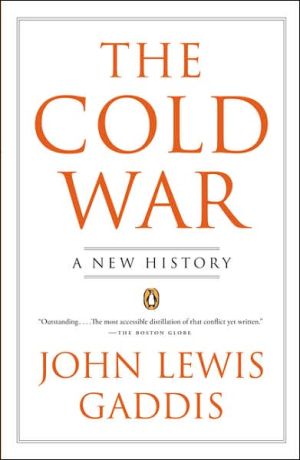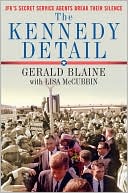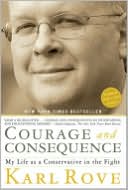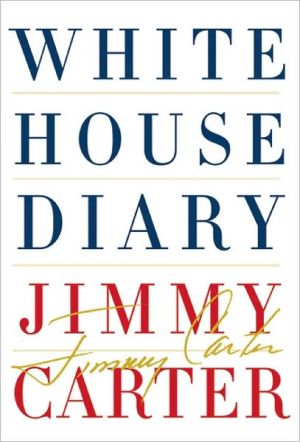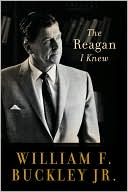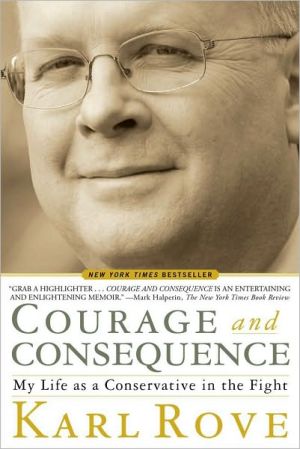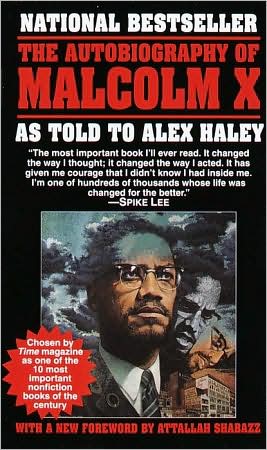The Cold War: A New History
The “dean of Cold War historians” (The New York Times) now presents the definitive account of the global confrontation that dominated the last half of the twentieth century. Drawing on newly opened archives and the reminiscences of the major players, John Lewis Gaddis explains not just what happened but why—from the months in 1945 when the U.S. and the U.S.S.R. went from alliance to antagonism to the barely averted holocaust of the Cuban Missile Crisis to the maneuvers of Nixon and Mao,...
Search in google:
In 1950, when Joseph Stalin, Mao Zedong, Ho Chi Minh and Kim Il-Sung met in Moscow to discuss the future, they had reason to feel optimistic. International communism seemed everywhere on the offensive: Stalin was at the height of his power; all of Eastern Europe was securely in the Soviet camp; America's monopoly on nuclear weapons was a thing of the past; and Mao's forces had assumed control over the world's most populous country. Everywhere on the globe, colonialism left the West morally compromised. The story of the previous five decades, which saw severe economic depression, two world wars, a nearly successful attempt to wipe out the Jews, and the invention of weapons capable of wiping out everyone, was one of worst fears confirmed, and there seemed as of 1950 little sign, at least to the West, that the next fifty years would be any less dark.In fact, of course, the century's end brought the widespread triumph of political and economic freedom over its ideological enemies. How did this happen? How did fear become hope? In The Cold War, John Lewis Gaddis makes a major contribution to our understanding of this epochal story. Beginning with World War II and ending with the collapse of the Soviet Union, he provides a thrilling account of the strategic dynamics that drove the age, rich with illuminating portraits of its major personalities and much fresh insight into its most crucial events. The first significant distillation of cold war scholarship for a general readership, The Cold War contains much new and often startling information drawn from newly opened Soviet, East European, and Chinese archives. Now, as America once again finds itself in a global confrontation with an implacable ideological enemy, The Cold War tells a story whose lessons it is vitally necessary to understand. The New York Times - William Grimes In The Cold War: A New History, he offers a succinct, crisply argued account of the Soviet-American conflict that draws on his previous work and synthesizes the mountain of archival material that began appearing in the 1990's. Energetically written and lucid, it makes an ideal introduction to the subject.
Prologue : the view forward1IThe return of fear5IIDeathboats and lifeboats48IIICommand versus spontaneity83IVThe emergence of autonomy119VThe recovery of equity156VIActors195VIIThe triumph of hope237Epilogue : the view back259
\ James MannGaddis's latest book boils down the history of the entire Cold War to a sometimes brilliant 266 pages of text, in trenchant, lucid prose intended not for historians and specialists but for ordinary readers. He has not done much new archival field work to produce this new synthesis, and, at times, he relies heavily on his previous work. Yet to Gaddis's credit, he does not merely rewrite himself or retrace the main events from 1946 to 1991. Instead, he stretches to find new ways … to cover the subject, stepping back and looking at the entire period with distance and perspective.\ — The Washington Post\ \ \ \ \ William GrimesIn The Cold War: A New History, he offers a succinct, crisply argued account of the Soviet-American conflict that draws on his previous work and synthesizes the mountain of archival material that began appearing in the 1990's. Energetically written and lucid, it makes an ideal introduction to the subject.\ — The New York Times\ \ \ Publishers WeeklyGregory and Sklar, reading Yale history professor Gaddis's study of the American-Soviet standoff, give voice to their inner television announcer, their twin brands of masculine sonorousness verging on virile parody before settling comfortably on the side of familiar voice-over solidity. Gaddis's work unravels the tangled threads of the Cold War, from the tense Allied conferences at the end of WWII to the Korean War and onward, and his book's readers give it the sensation of every word being carefully cultivated and primped before being spoken. If this leads to some of the immediacy, the heart-in-throat sensation, of the events described being diluted, so be it, for Gregory and Sklar give Gaddis's book the grandeur its subject matter so richly deserves. Sounding more professorial, in the I-play-an-Ivy-League-professor-on-television sort of way, than the good professor himself, Gregory and Sklar do an admirable job of making Gaddis's learned words their own. Simultaneous release with the Penguin Press hardcover (Reviews, Nov. 14). (Jan.) Copyright 2006 Reed Business Information.\ \ \ \ \ Foreign AffairsIn this beautifully written panoramic view of the Cold War, full of illuminations and shrewd judgments, the distinguished diplomatic historian Gaddis brings the half-century U.S.-Soviet struggle to life for a general audience. Seen in retrospect, the Cold War — from the Truman Doctrine and the Korean War to the Cuban missile crisis, détente, and the fall of the Berlin Wall — appears to lead inexorably to a Western triumph. Gaddis seeks to show otherwise: the contingencies of individuals, ideas, critical decisions, narrow escapes, lost opportunities, and lurking dangers all intervened to give the great contest its character and trajectory. Drawing on his own earlier work and a synthesis of post-Cold War scholarship, Gaddis sees the conflict less as an inherent element in the bipolar postwar world than as a result of Soviet impulses toward domination, driven by ideology and dictatorship. He is best in depicting the ethical and strategic dilemmas that faced American presidents: the Cold War may have been a global struggle, but leaders such as Dwight Eisenhower, Lyndon Johnson, and Richard Nixon struggled at home to square foreign policy with principles of morality, law, and democratic accountability. Gaddis gives credit for the end of the Cold War to visionaries and "saboteurs of the status quo" such as Pope John Paul II, Lech Walesa, and Deng Xiaoping, as well as Mikhail Gorbachev, Ronald Reagan, and Margaret Thatcher. That Gaddis is now able to see this fifty-year conflict in its totality as a positive, progressive, and necessary struggle is a sign of how far into the past the Cold War era has receded.\ \ \ \ \ Library JournalYale University historian Gaddis brings a depth of knowledge-six previous books on the subject-and lucidity of language to a sweeping overview of the Cold War, mostly from the end of World War II to the disintegration of the Soviet Union. Personalities are among the dominant features here: Mikhail Gorbachev, for example, was "the most deserving recipient ever of the Nobel Peace Prize." This is because Gorbachev did not unleash the might of the Soviet military machine even as the Communist government crumbled around him. In this highly significant way, the Cold War can be considered as much for what did not happen as for what did. Among the other notables due praise, many but not all primarily in the realm of ideas, are Margaret Thatcher, Ronald Reagan, George Orwell, and Pope John Paul II. Totalitarian systems flourished in the early postwar stages of the Cold War, but curiously they began to fade. By the time of the Soviet collapse, authoritarian regimes worldwide were losing control. Narrators Jay Gregory and Alan Sklar are lucid, but they sound much the same. There is no doubt that the book is a classic, sure to be heavily used by students of recent history.-Don Wismer, Cary Memorial Lib., Wayne, ME Copyright 2006 Reed Business Information.\ \ \ \ \ Kirkus ReviewsCold War scholar Gaddis fashions a short but comprehensive account of what JFK called our "long twilight struggle."Following the defeat of the Axis powers in WWII, the western democracies faced off against their former ally, the totalitarian Soviet Union, in a global contest to determine the shape of the future. Each side's nuclear arsenal made total war unthinkable, but neither could afford to back down. Gaddis (History/Yale; The Landscape of History, 2002, etc.) condenses this sprawling story for a new generation of readers. He resuscitates such almost-forgotten acronyms as SALT, START, SEATO, NATO and MAD, and he places the wars in Korea and Vietnam within the context of the larger struggle and reminds us how lesser tussles over the Chinese offshore islands Quemoy and Matsu, the African nation of Angola, Cuba's Bay of Pigs and Afghanistan before al-Qaeda also affected superpower relations. He discusses the impact of the Berlin Wall, the Cultural Revolution and the Marshall Plan, as well as the Berlin airlift, the Cuban missile crisis, the downing of Gary Powers's U-2 spy plane, Solidarity's Gdansk shipyard strike and Nixon's trip to China. The Cold War's surprisingly peaceful outcome was by no means assured. The democracies forged many an unseemly compromise, suffering frequent setbacks and not a few outright defeats before prevailing. In the end, however, as Gaddis demonstrates, Marxism, which failed to ensure economic success even as it stifled political and social justice, proved no match for the vision of George Kennan or the stirring rhetoric of Kennedy and Reagan in Berlin, Churchill at Westminster College and John Paul II in Krakow. A superb introduction to a complex period inworld history.\ \
